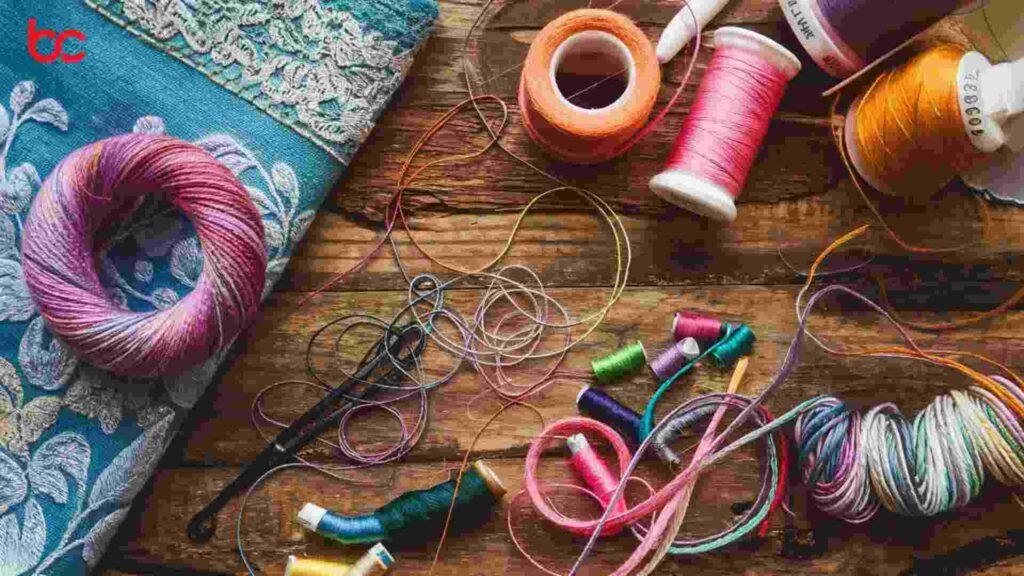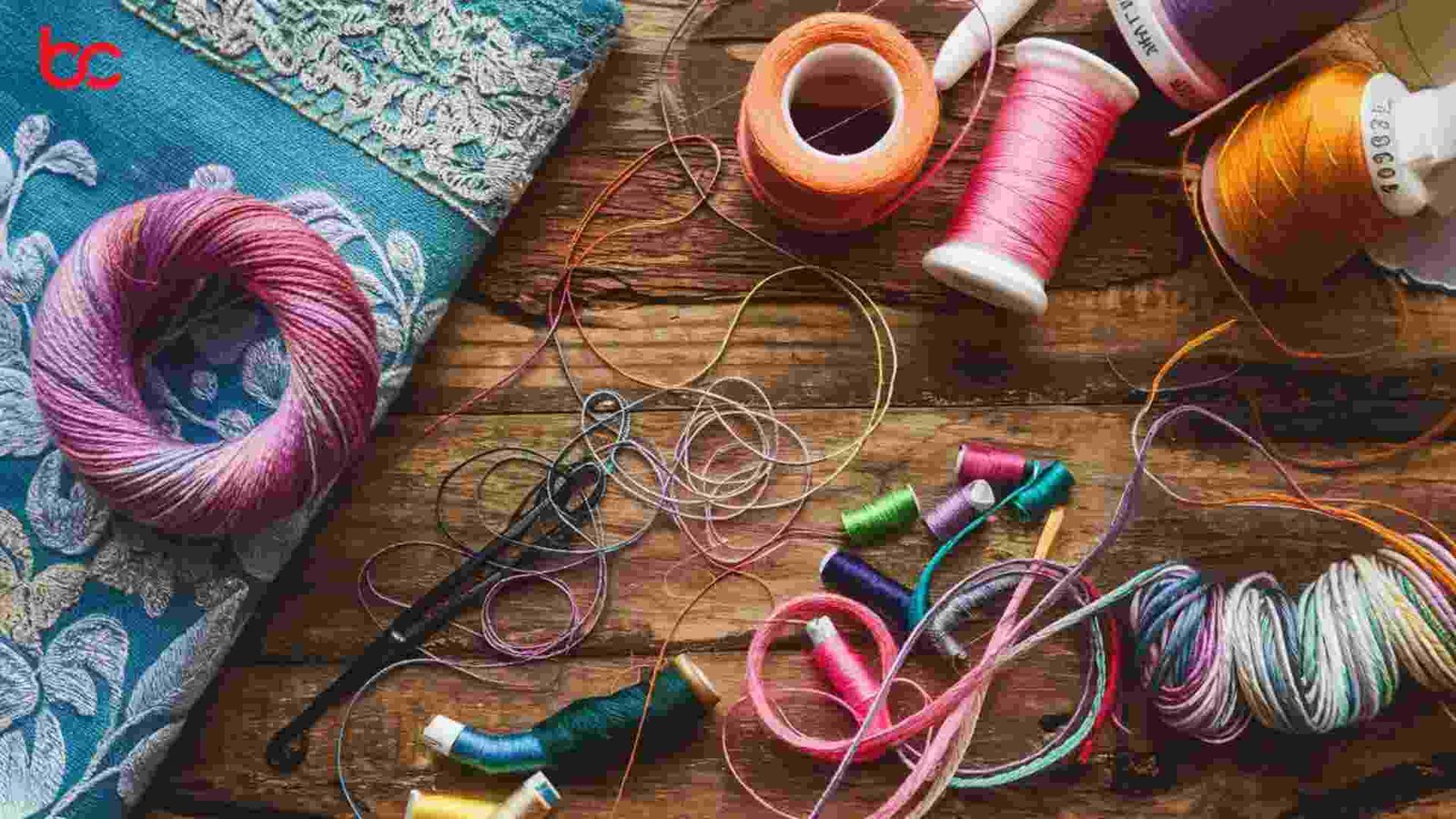Thread coloration:
Choosing the proper thread coloration is an essential yet frequently omitted aspect of stitching. Whether you’re operating on a cover, repairing a garment, or creating a completely unique piece of clothing from scratch, the thread performs a twin role. It not only holds the cloth collectively however additionally influences the aesthetics of the final product. A well-decided on thread shade can increase the undertaking by way of both mixing seamlessly into the material or status out as a decorative element.
In this comprehensive guide, we will explore the important thread colors you have to have for your collection, explain the motives in the back of selecting specific colorings, and provide recommendations for deciding on the pleasant thread color for any stitching assignment. This will assist you make informed picks, avoid common errors, and ensure that your stitching projects are polished and expert-searching. Along the manner, we’ll additionally cowl key standards which include thread blending, decorative stitching, and color evaluation.
1. Neutral Colors: The Backbone of Every Thread Collection
Neutral colorings like white, black, gray, and beige are the foundation of any sewing thread series. These shades are surprisingly versatile and can be used for an extensive range of initiatives, making them important in any sewing package.
- White: A conventional preference for light-coloured fabrics. White thread blends seamlessly with white or mild pastel fabrics, supplying a clean, invisible seam. It’s regularly used for bridal wear, mild summer time dresses, and sensitive fabrics.
- Black: Essential for darkish fabric, black thread actually disappears into darkish cloth, growing a professional end. It’s additionally beneficial for sewing on textured or patterned fabrics in which you need the thread to remain inconspicuous.
- Gray: Gray thread, particularly a medium color, is a move-to when you don’t have an precise color healthy. It’s an impartial compromise that blends rather well with each light and dark fabrics, making it a first rate choice for blended-color projects.
- Beige/Nude: Often used for stitching on skin-tone fabrics or earth-toned materials, beige is ideal for growing invisible seams on nude-coloured garments, lingerie, or herbal fiber textiles like linen and cotton.
Why Neutral Colors are Important:
Neutral hues function the spine of your thread series because they’re fairly versatile. Whether you’re hemming, repairing, or sewing a new garment, neutral threads mixture into the material without drawing attention to the sewing. Their adaptability makes them perfect for normal sewing duties, ensuring a smooth and polished appearance.
2. Primary Colors: Essential for Bold Fabrics
Primary shades like crimson, blue, and yellow are vital for colorful sewing tasks. These vibrant threads are usually used while you need an exact color fit or need the thread to stand out as a layout detail.
- Red: Red thread is a popular preference for declaration pieces, especially in style. It is frequently used for ornamental sewing, buttonholes, and accents on bold fabric. Red is likewise symbolic in cultural garments and formal wear.
- Blue: A military blue or medium blue thread is crucial, specially for sewing denim or dark-colored fabrics. It’s additionally a favorite for nautical-themed initiatives or home décor items like cushions or curtains.
- Yellow: Bright and joyful, yellow thread is best for including a sunny touch to youngsters’s clothing, summer clothes, or festive decorations. Shades like mustard or golden yellow also are commonly used for autumnal and antique-style initiatives.
Why Primary Colors Matter:
Primary colors are versatile and regularly utilized in quite a few sewing applications. They are specially essential for initiatives that require formidable, attractive elements or for matching vibrant fabrics. These colorings add lifestyles and personality for your stitching initiatives, making them more expressive and dynamic.
3. Secondary and Tertiary Colors: For Color Coordination
If you are running on greater complex or colorful initiatives, secondary colorings like green, orange, and red will be available in handy. These hues assist you in shaping cloth tones exactly or create comparison that enhances the cloth layout.
- Green: A rich olive or wooded area inexperienced thread blends well with herbal tones and is right for sewing outdoor gear, military-stimulated garb, or nature-themed domestic décor. Brighter greens, which include lime or emerald, upload a playful pop to children’s clothes or informal put on.
- Orange: From colorful tangerine to burnt orange, this shade is a terrific choice for autumnal tasks or sports activities-themed garments. It provides striking evaluation when paired with blues, making it ideal for activewear or out of doors garb.
- Purple: Ranging from deep violet to light lavender, crimson thread adds a touch of beauty or whimsy on your stitching. It is regularly used in regal-themed designs, formal clothes, or for frolicsome accents in children’s apparel.
Why Use Secondary and Tertiary Colors:
These hues provide you with more options whilst running on initiatives that need particular color fits. Whether you’re sewing a custom garment, quilting, or doing ornamental sewing, these shades permit for more creativity and precision. Secondary and tertiary hues are ideal for adding depth and complexity in your designs.
4 Metallic and Specialty Threads: For Decorative Embellishment
Metallic and area of expertise threads like gold, silver, and variegated threads are in general used for decorative purposes. These threads add measurement and texture to your sewing, making them best for creating computer graphics or including a highly-priced experience.
- Gold/Silver: Metallic threads in gold and silver upload a hint of luxury to clothes or domestic décor projects. These threads are frequently used for festive designs, together with vacation decorations, embroidered accents, or ornamental topstitching on formal wear.
- Variegated Threads: Variegated threads trade shade during the spool, offering a beautiful multi-tonal impact. They are typically used in quilting, loose-motion embroidery, and innovative stitching projects in which color blending is desired.
Why Use Metallic and Specialty Threads:
These threads are best while you want to make your sewing the focus of the design. Whether you are embellishing a unique occasion garment or adding a completely unique touch to home décor, metallic and variegated threads create beautiful visual consequences that increase the general appearance of your mission.
5. Earth Tones: Subtle and Natural
Earth tones like brown and taupe are extraordinary for sewing on natural fabric or growing clothes with a country feel. These colors are mainly famous in initiatives that emphasize simplicity and craftsmanship.
- Brown: Dark and light browns are ideal for stitching leather-based, suede, or other earth-toned fabric. This thread color is regularly used in outside equipment, baggage, and vintage-fashion apparel.
- Taupe: A muted, herbal shade, taupe thread blends seamlessly with a huge range of neutral fabrics. It’s ideal for sewing home décor gadgets like cushions, curtains, and different tender fixtures.
Why Earth Tones are Essential:
Earth tones are subtle and blend well with herbal or rustic fabrics. They are perfect for stitching tasks where the purpose is to create an understated, classic look without drawing interest to the stitches. These shades paintings fantastically in nature-inspired designs, making them essential for outdoor or green tasks.
6. Brights and Neons: For High-Impact Projects
Bright and neon-coloured threads are ideal for including a pop of color to any assignment. These threads are frequently utilized in activewear, youngsters’ garb, or modern-day home décor.
- Neons: Neon colors like fluorescent purple, green, and yellow are famous for athletic wear, protection gear, or any venture where excessive visibility is needed. They are also fun to apply in children’s garb or accessories, in which shiny colors can create a playful and cutting-edge appearance.
Why Use Brights and Neons:
Brights and neons are ideal for initiatives where the thread is supposed to stand out rather than mixture in. They’re regularly used for accent sewing, ornamental embroidery, and bold layout factors that demand interest. These threads can add a dynamic, energetic contact to any stitching undertaking.
7. Seasonal Colors: Perfect for Holiday and Special Projects
Seasonal thread shades like burgundy, deep green, and pastels are ideal for particular events. These threads allow you to tailor your stitching to the time of 12 months or to a selected theme.
- Burgundy and deep green are famous selections for holiday stitching, in particular for Christmas-themed tasks. These rich colorings create a festive, stylish feel, whether or not you are stitching excursion decorations or formal put on.
- Pastel shades like light crimson, child blue, and lavender are frequently utilized in springtime tasks or for child garb and add-ons. These smooth colors create a sensitive, calming aesthetic that is ideal for lighter fabrics.
Why Use Seasonal Colors:
Seasonal thread colors help you customize your sewing initiatives in line with holidays or special activities. These colors set the temper and subject matter, including a further layer of creativity and thoughtfulness in your stitching, especially for presents, decorations, or themed apparel.
Tips for Choosing the Right Thread Color
- Match the Fabric: When deciding on a thread, preserve the spool against the material in natural mild to discover the nearest healthy. If the precise color isn’t to be had, opt for a shade slightly darker, as darker threads tend to blend higher than lighter ones.
- Use a Color Wheel: For ornamental stitching or accents, talk over with a color wheel. Complementary colorations can make the stitching stand out, while analogous colorings will create a greater harmonious look.
- Consider the Purpose: If the thread is supposed to combine into the cloth, choose an impartial or matching color. For ornamental factors, select a contrasting or complementary coloration to make the stitching a focal point.
- Experiment with Specialty Threads: Don’t be afraid to use metal or variegated threads for unique, textured effects. These threads upload dimension and creativity to projects that name for a greater tricky finish.
Conclusion: Building a Versatile Thread Collection
The proper thread shade could make or damage a sewing assignment. By stocking up on various essential thread colors—from impartial basics to vibrant primaries and strong point threads—you will be prepared for any assignment. Whether you need your stitches to combine into the material or stand out as part of the layout, having a nicely-rounded series of thread hues will make certain that you usually have the proper color handy.
Neutral threads offer flexibility for normal tasks, at the same time as bright, seasonal, and metallic threads upload range and aptitude to creative initiatives. By information about the reason for different thread hues and how they interact with fabric, you may elevate your sewing projects from simple to marvelous.
FAQs on Choosing the Right Thread Color
1. What thread color should I use?
Use a thread color that matches the dominant shade of your fabric. If you can’t find a genuine healthy, choose a neutral shade like gray or beige that blends properly with maximum fabric.
2. Is it better to apply darker or lighter thread?
Darker thread will create evaluation and stand out more, while lighter thread blends more subtly with cloth. Choose primarily based on whether or not you want the stitches to be seen or to mixture in.
3. What are the maximum flexible thread colors?
The maximum versatile thread shades are white, black, gray, and beige. These shades work nicely with a huge variety of fabrics, making them critical in any sewing package.
4. How do I find the proper color thread?
To discover the right shade, hold the thread spool against the fabric in herbal mild and pick the color closest to the fabric’s dominant color. If unsure, gray or beige are remarkable blending alternatives.







2 Responses